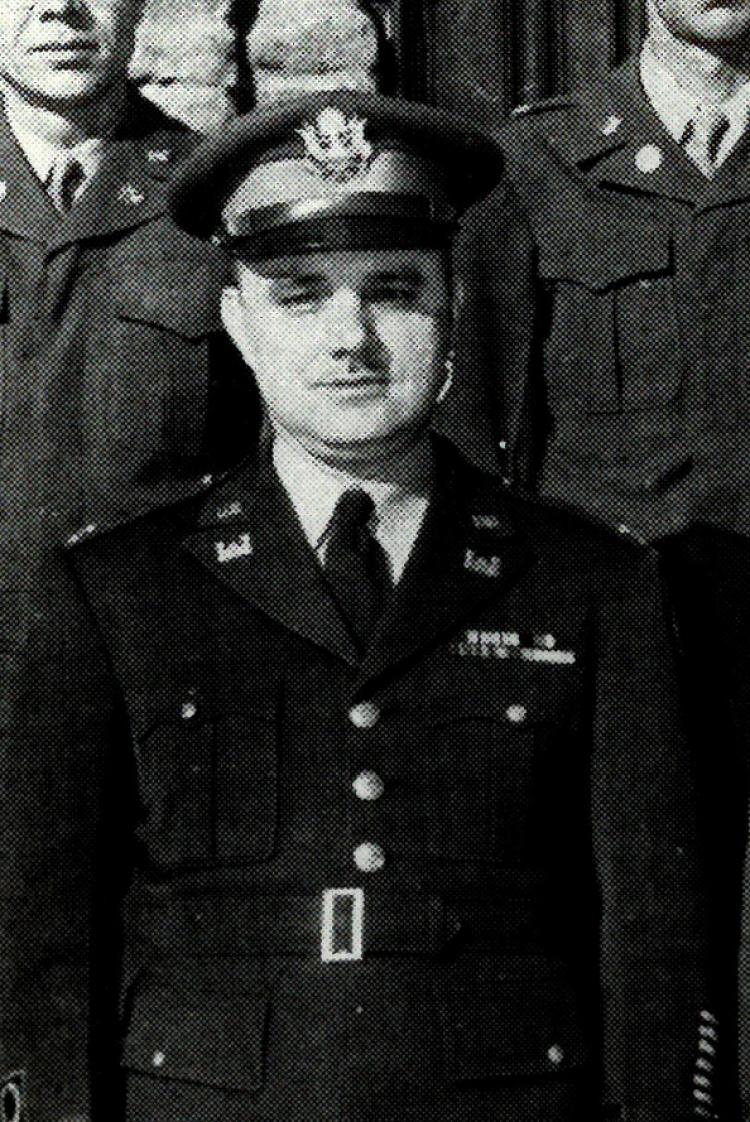Chester L. Landaker, COL (1909-1999)

Photo provided by the University of Colorado Boulder Museum Archives – pictured Colonel Chester Lavaughn Landaker (photo circa 1948).
Chester Lavaughn Landaker was born in Clinton, Missouri on July 22, 1909. After one year at Missouri University, he was appointed to USMA and graduated with honors in 1931. Commissioned in the Corps of Engineers, he was first assigned to the U.S. Engineer District in St. Louis. He then attended Cornell University, where he graduated with a degree in engineering in 1934.
His first assignment was at Fort Humphreys, Virginia (later Fort Belvoir) – the home of the Corps of Engineers. He utilized Works Progress Administration (WPA) labor and troop equipment to construct roads, walks, storm sewers, and landscaped/cleared for the new officers’ quarters, club, and post headquarters.
Assigned in 1936 to the 3rd Engineer Regiment, Schofield Barracks, Territory of Hawaii. He again used WPA labor and troop equipment to build an ERA project consisting of 20 miles of macadam road on the island of Oahu to connect Pearl Harbor with Barbers Point. He also finished six miles of mountain road across Kolekole Pass to connect Schofield Barracks to the U.S. Naval Station south of the mountains.
In 1938, he became instructor of the 120th Engineer Regiment of the New Mexico and Oklahoma National Guard at Las Cruces, New Mexico. He directed the planning and conduct of training of seven engineer companies in different cities of New Mexico and Oklahoma, and who were inducted into federal service in 1940 in preparation for WWII.
COL Landaker returned to Fort Belvoir and graduated from the Engineer School in 1941. He then assisted in the organization of the 7th Engineer Training Group that later moved to its home station in Fort Leonard Wood, Missouri, to organize and train engineer units for service in WWII. In 1942, he organized the 820th Engineer Aviation Battalion in Tucson and moved with it to Debach, England, to build a bomber base. He then commanded the 924th Engineer Aviation Regiment and constructed many bomber bases throughout East Anglia to protect England from air raids from German air units in France.
COL Landaker then commanded the 358th General Service Regiment that, with attached troops, accomplished the construction of strategically critical pipelines through France and Belgium into Germany. As a part of that operation, he was in charge of the repair and maintenance of the American section of the Port of Antwerp and surrounding ports, dumps, bases, and other military installations during the 175 days of continuous air and V-weapon attacks during October 1944 – March 1945. For that, he was honored by Belgium as “Officer of the Order of Leopold II,” in recognition of services rendered to Belgium. He also undertook major rescue work for the city of Antwerp when large theatres, barracks, and office buildings were struck by bombs or V-weapons, resulting in great loss of life and trapping masses of people in hazardous debris.
Upon his return to the U.S., he became executive assistant to the district engineer in Kansas City during 1946-48, and supervised the activities of the district in the design and construction of large earth dams, levees, and concrete walls for flood control and navigation along the Platte River to Omaha, and the Missouri River to its junction with the Mississippi River. In 1948-49 he served as Professor of Military Science at the University of Colorado in Boulder. Followed by another year as Deputy Engineer, Third Army, Atlanta, where he reviewed and approved projects for major rehabilitation and maintenance at ten large Army posts.
During 1953-54, he was Director of the Technical Division of the Korea Civil Assistance Command in Seoul. As head of the Transportation, Public Works, and Communication branches, he assisted the counterpart Ministries of the Korean government to plan and reconstruct public facilities destroyed by the Korean War. It amounted to the complete rebuilding of the city of Seoul and the Port of Pusan after their almost complete destruction by North Korean forces.
In 1954, Chester suffered a major hemorrhage from a stomach ulcer and returned to Washington, D.C., where he suffered the loss of a major portion of his stomach and the removal of his intestine. His next assignment during 1954-57 was as Inspector General at Fort Belvoir, followed by the job of Comptroller, where he budgeted, accounted for, and audited fund and property accounts to maintain and operate facilities for 17,000 troops.
During 1957-59, he became Deputy Division Engineer, U.S. Army Division, Pacific Ocean, Honolulu, Hawaii, and assisted the Division Engineer in the expenditure of approximately $65 million annually on design and construction of troop facilities in the Hawaiian Islands, Kwajalein Atoll, Japan, Okinawa, Korea, and Taiwan for all of the U.S. military. The work consisted of harbor facilities, flood protection, and all facilities required for complete cantonments and airbases.
While in Hawaii, he became a registered civil engineer of Hawaii before returning to the U.S. He served as Deputy Division Engineer, Ohio River Division, until 1961, when he retired for physical disability as a colonel.
Chet next attended the School of Engineering at Purdue University in West Lafayette, Indiana, where he earned a master of science degree in 1962. Following that, he became Assistant Professor of Engineering and Mathematics at the University of Nevada, Las Vegas. He continued teaching mathematics until 1974, when he retired for the final time. He remained very active in the military and engineering societies of Las Vegas, including the American Society of Civil Engineers, the Military Order of the World Wars and The Retired Officers Association.
Chester married Mary Catherin Hogan of Schenectady, New York in 1946, whom he first met in Tucson in 1942. She passed away in 1987 in Las Vegas after 41 years of a very happy marriage. Chester passed away on April 1, 1999 in Chico, California. He is survived by his two sons, Chester L., Jr., and Stephen David.
